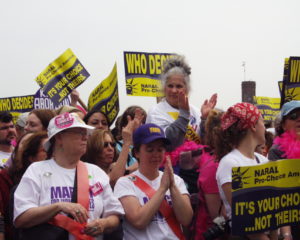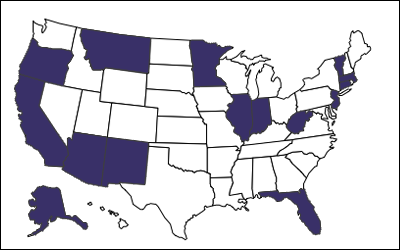Abortion Rights in a Post-Roe v. Wade World
 By Pattymooney - Own work, CC BY-SA 3.0, https://commons.wikimedia.org/w/index.php?curid=14333525March for Women's Lives 2004
By Pattymooney - Own work, CC BY-SA 3.0, https://commons.wikimedia.org/w/index.php?curid=14333525March for Women's Lives 2004 Abortion is not a new practice, but before the United States Supreme Court decision in Roe v. Wade that granted women the legal right to abortion, women endured dangerous circumstances and expensive measures to terminate pregnancies. Obtaining an abortion before Roe v. Wade could mean traveling to another country, forking over an obscene amount of money, and even risking death or serious injury through self-induced abortions. There was such a high demand for access to abortions that secret underground networks, most notably The Abortion Counseling Service of Women’s Liberation (also known as “Jane”), were established. The days when women couldn’t make choices over their own bodies should be long over, but forty-three years later, advocates for women’s reproductive rights are still fighting for these precious freedoms.
Most humanists know that the biggest opposition to abortion comes from the religious right. The anti-choice movement is aggressively led by religious groups that relentlessly promote false information about reproduction and bogus statistics, as well as employ scare tactics to deter women from making difficult decisions that could improve or even save their lives.
Unfortunately, many politicians who share anti-choice views are using their political platforms to impose their religious beliefs on women’s bodies and to take away our reproductive freedoms. Far too many states regularly introduce legislation, some of it bizarre, that challenges the rights women have over their own bodies and significantly complicates access to abortion. For instance, a recent law in Texas requires aborted or miscarried fetuses to be either buried or cremated. While this law doesn’t specifically ban abortions, it is a slimy tactic to dramatically increase the cost of abortions for women, making it that much harder for women to have them.
According to the Guttmacher Institute, in 2015, 396 measures were introduced in forty-six state legislatures to restrict abortion access. And considering the results of our recent presidential election, protections for women are looking bleak. President-elect Donald Trump, who has been rather vague on the abortion issue (and many other issues), has said that if the abortion decision went to the states, “They’ll [women] perhaps have to go—they’ll have to go to another state.” Time to open the underground abortion railroad again!

Image from NARAL: https://goo.gl/lxoF7X.
So what are blue states doing to ensure we don’t go back to the days when abortions could only be obtained by international travel, clandestine networks of illegal and unprotected medical practices, and extreme bodily harm? Some states, including Alaska, California, Montana, and New Jersey, have already included greater protections in their constitutions to protect a woman’s right to choose beyond what is guaranteed by the federal government under Roe v. Wade.
According to NARAL, protections like these will guarantee that women living in those states will have some protections even if Roe v. Wade is overturned. So, while access to safe and legal abortion is currently a right of all women, more and more states may want to consider a backup plan and set their own protections in place, and humanists should educate themselves about what their states’ regulations are on abortion so that they can stand with the abortion rights movement to defend women’s bodily autonomy.
